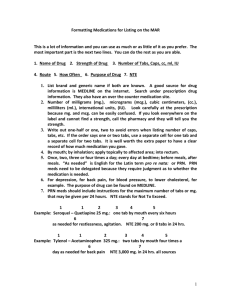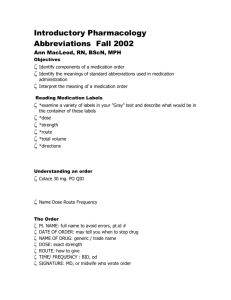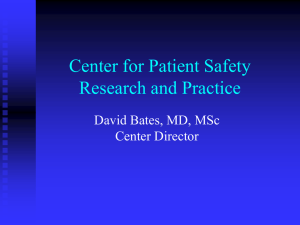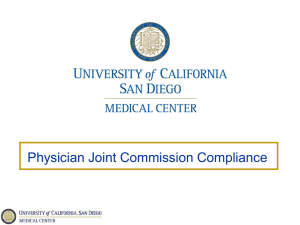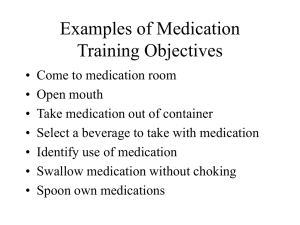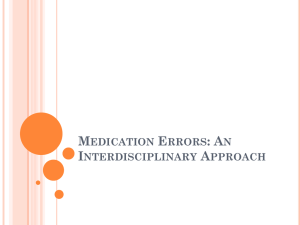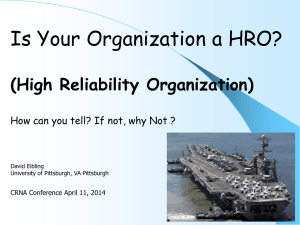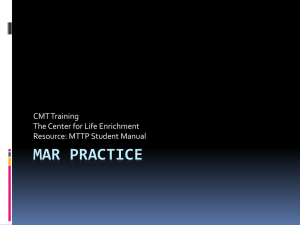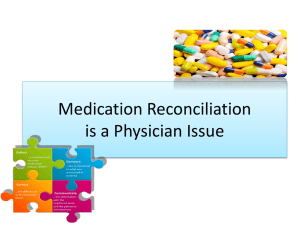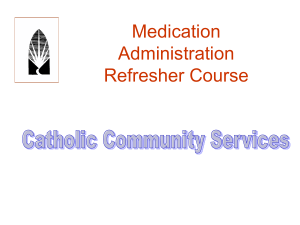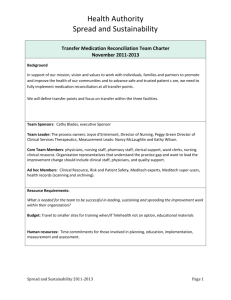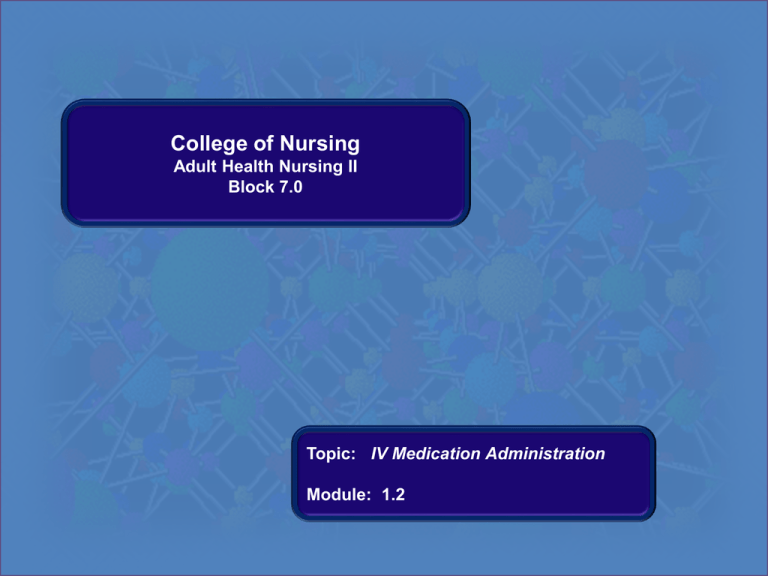
College of Nursing
Adult Health Nursing II
Block 7.0
Topic: IV Medication Administration
Module: 1.2
Block 7.0 Adult Health II
Block 7.0 Module 1.2
Apply the principles of safe intravenous
medication administration.
Apply knowledge of dosage calculations to
determine correct medication dosages for
patients.
Develop an individualized plan for each
patient’s education about intravenous
medication administration.
Identify nursing responsibilities for the
patient experiencing an adverse drug
reaction
Manage a patient on multiple IV drugs that
are incompatible
Demonstrate appropriate documentation.
Be prepared to discuss key terms.
Block 7.0 Module 1.2
Extravasation
Vesicant medications
Infiltration
Phlebitis
Thrombosis
Thrombophlebitis
IV Drug Compatibility
Block 7.0 Module 1.2
Most rapid therapeutic effect
Can lead to immediate serious reactions
Nurse must know:
Drug indications & proper dosage
Contraindications & precautions
Appropriate dilution, rate of infusion, pH &
osmolarity, compatibility with other IV
meds
Never assume that IV administration is the
same as giving the drug by other routes
Block 7.0 Module 1.2
Six rights of med administration:
Right drug
Right dose
Right route
Right time
Right patient
Right documentation
Document on the MAR immediately after giving
If you did not give the med, indicate on the MAR
& document in the nurse’s notes why you did
not give the med
Block 7.0 Module 1.2
Do 3 checks on the first 5 rights:
Check #1: Compare the med label to the MAR as
you remove the drug from the storage area
Check #2: Compare the med label to the MAR as
you prepare each drug
Check #3: Compare the med label to the MAR at
the patient’s bedside before you give each drug
Block 7.0 Module 1.2
Reduces risk of adverse advents
Provides baseline for evaluating IV med
intervention
Review:
Health history esp. drug allergies & current
labs
Medication data contraindications to IV med
Vital signs
Physical assessment check IV site for redness,
swelling, drainage
Patient’s learning needs
Block 7.0 Module 1.2
Most IV drug solutions are prepared in the
pharmacy
If nurse prepares, drug for IV administration,
follow these safety rules:
Check expiration date
Maintain sterile technique
Inspect the drug, dilutent and solution for
particles or cloudiness
Block 7.0 Module 1.2
Common diluents
Normal Saline (0.9%)
Sterile Water for injection
Dextrose 5% in water
Some drugs come in double chambered
vials, one with powder, one with diluent
Solution containers must be labeled
Patient’s name
Room number
Date
Name and amount of solution and drug
Block 7.0 Module 1.2
Name of the drug
Concentration of the drug.
Type of diluent used to reconstitute the drug.
Expiration date and time of the drug.
Any other important details - for example, if
there are different reconstitution directions
for IV and IM used, we should indicate
whether the medication is for IM or IV use.
Initials or name of RN reconstituting drug
(depending upon hospital policy).
Block 7.0 Module 1.2
Block 7.0 Module 1.2
Reconstitute Kefzol
What is the diluent? _______________________
What is diluent volume?___________
What is reconstituted volume?________
What is solution concentration?_______
Block 7.0 Module 1.2
Severe adverse reactions may occur quickly
Hypersensitivity to IV drugs can occur
immediately
The most severe reaction is anaphylaxis
Dramatic, acute reaction
Marked by sudden onset of rapid, progressive
urticaria and respiratory distress
The most common anaphylaxis-causing
drug is Penicillin
It causes a reaction in 1 to 4 persons out of 10,000
Is most likely to occur after parenteral
administration
Block 7.0 Module 1.2
Refers to the chemical stability of 2 or more IV
meds when administered together.
IV drug compatibility is defined as:
No visible or electronically detection of
particulate formation, haze, precipitation,
color change, or gas evolution; and
Stable (<10% decomposition) for at least 24
hr in admixture
When administering 2 or more IV meds in one
IV line, determine the compatibility of each
med with the other.
Block 7.0 Module 1.2
Compatibility Chart
Block 7.0 Module 1.2
Problems with giving multiple, incompatible IV
drugs on time:
Too many IV drugs scheduled at same time or
too close together
Patient has limited # of IV access ports
Resolution:
Stagger IV drugs for time management
discuss with pharmacy
Flush IV line with NS if multiple IV drugs
scheduled close together
Suggest placement of 2-3 lumen PICC or central
line
Block 7.0 Module 1.2
Medications injected directly into IV port using
syringe.
USN nursing students can only “push” NS to
flush IV tubing
As an RN, when giving IV push meds, be
sure to flush the IV line before & after each
med with 10 mL of NS or per facility protocol
Block 7.0 Module 1.2
Med IV Push OR PICC Line Flush
Block 7.0 Module 1.2
Pre-administration, teach patient:
Name of drug
Desired action
Frequency of administration
Possible adverse effects
Report pain or swelling at or distal to IV
insertion site
Block 7.0 Module 1.2
Drug, dose, route (bolus or “push” or piggyback), time, &
signature
If you withhold a drug or if patient refuses it, indicate this
on the MAR & document the reason in your nurses’ notes
Patient’s response to the medication
Appearance of IV site before, during, & after
administration
Amount and type of fluid to which the medication is
added
Whether it is being infused by an electronic pump or by
gravity
Period of time during which the medication is infused
Flow rate
Amount and type of fluid for flushing the intravenous line
before and after medication administration
Block 7.0 Module 1.2
Block 7.0 Module 1.2

